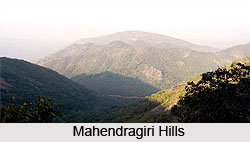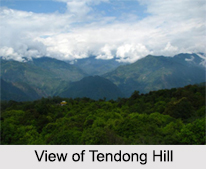 History of Srinagar can be traced back to the ancient ages, around the 3rd century BC. The term Srinagar is a derivation of two Sanskrit words, `Sri` which implies Lakshmi and `Nagar` meaning city. Some historians are of the view that the city of Srinagar had been created by Ashoka, who was a Pandava ruler. There is another account which states that King Ashoka, who was the famous Mauryan king had been the original founder of the city of Srinagar, which was then located near Pandrethan village. This village was based at a distance of nearly 5 km away from the northern portion of the current Srinagar capital.
History of Srinagar can be traced back to the ancient ages, around the 3rd century BC. The term Srinagar is a derivation of two Sanskrit words, `Sri` which implies Lakshmi and `Nagar` meaning city. Some historians are of the view that the city of Srinagar had been created by Ashoka, who was a Pandava ruler. There is another account which states that King Ashoka, who was the famous Mauryan king had been the original founder of the city of Srinagar, which was then located near Pandrethan village. This village was based at a distance of nearly 5 km away from the northern portion of the current Srinagar capital.
Ancient History of Srinagar
Srinagar was known by numerous names in the ancient ages. Certain historical records claim that King Pravarasena II had created Srinagar more than 2,000 years ago and referred to the city as Parvasenpur. During that time, Srinagar was a portion of the Maurya Empire and the religion of Buddhism was ushered here by King Ashoka. Thereafter, Srinagar and the regions surrounding this place became important centres of Buddhism. Around the 1st century, Srinagar was controlled by the Kushanas and numerable kings of Kushana dynasty popularised the traditions and customs of Buddhism in this part of the country. It is believed that King Vikramaditya of the kingdom of Ujjain reigned over this portion of India. This was before the Huns conquered this area in the 6th century. Mihirkula was said to have been the most feared ruler of the Srinagar valley, who was a tyrant. Around the period of 960AD, Srinagar was made the capital of Kashmir.
 Medieval History of Srinagar
Medieval History of Srinagar
Srinagar continued to be administered by the Buddhist and Hindu rulers till the 14th century, when the city of Srinagar and the Kashmir valley was acquired by Muslim rulers. When the Mughals arrived in India, they gained control of Srinagar. Certain historical accounts assert that King Yusuf Shah Chak, who was an independent Kashmiri ruler, was tricked by the Mughal emperor Akbar into submitting the Kashmir valley to the latter. It is said that this was deliberately done by Akbar since he was incapable of invading Kashmir by his own forces. Thereafter, Akbar declared Kashmir as a part of his Mughal Empire, which also included the regions of valley of Kashmir and Srinagar.
Following the decline of the Mughal Empire, after Aurangzeb`s death in the year 1707, Pashtun tribes arrived in Srinagar and this part of India was ruled by the Durrani Empire for many decades. During 1814, Maharaja Ranjit Singh of Punjab captured a considerable portion of Kashmir valley which consisted of Srinagar, to his own kingdom. Consequently, Srinagar passed into the control of the Sikhs. The Treaty of Lahore was signed in the year 1846, between the British and the Sikh kings, in Lahore. According to this treaty, the British were granted de facto suzerainty over Kashmir valley. Gulab Singh became an independent ruler of this area and continued to be amongst the princely states in British India, till the year 1947. Sher Garhi Palace was selected as the official royal residence by the Maharajas.
Modern History of Srinagar
On 17th August, 1947, villagers residing near the Poonch valley rebelled against the continuous rule of the Maharaja, when India had attained independence from the British Raj. Pashtun tribes like `Afridi` and `Mehsud` entered Srinagar from the Pakistan`s Khyber Pakhtunkhwa to conquer it on 22nd October, 1947. However, the Maharaja refused to grant Kashmir either to Pakistan or to India and wanted to rule Kashmir independently and signed the `instrument of accession` during 1947. This accession was accepted by the government of India the following day and Indian army was sent to Srinagar, who obstructed the entry of tribesmen into Srinagar. On 19th January, 1990 Srinagar became the centre for the maximum amount of political turmoil, which resulted in violent protests, strikes, bomb-blasts and curfews fuelled by the Gawakadal Massacre.








